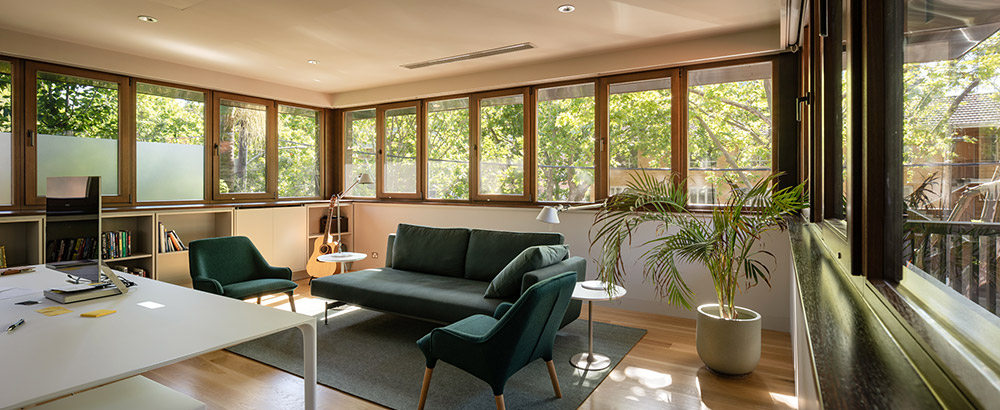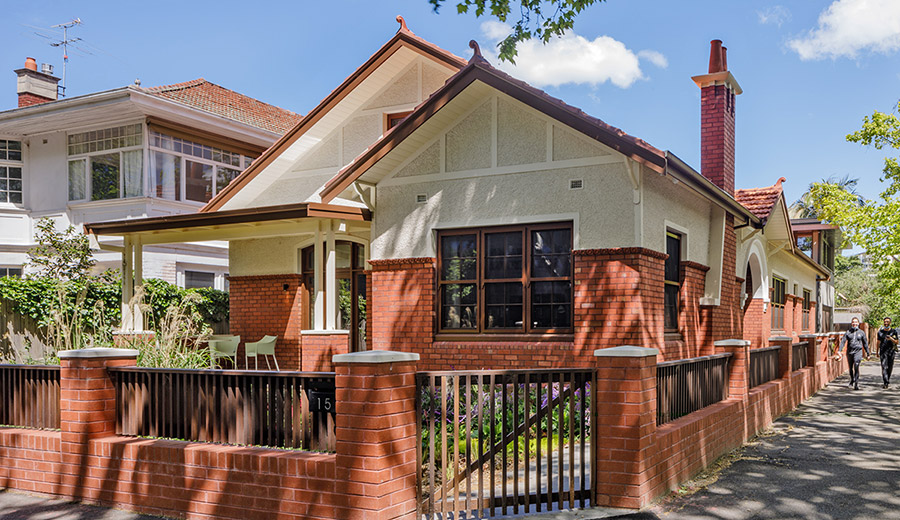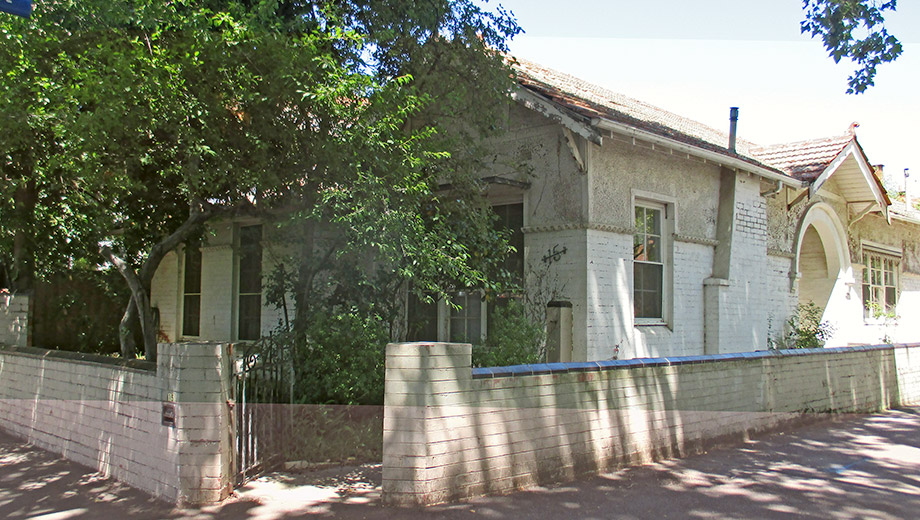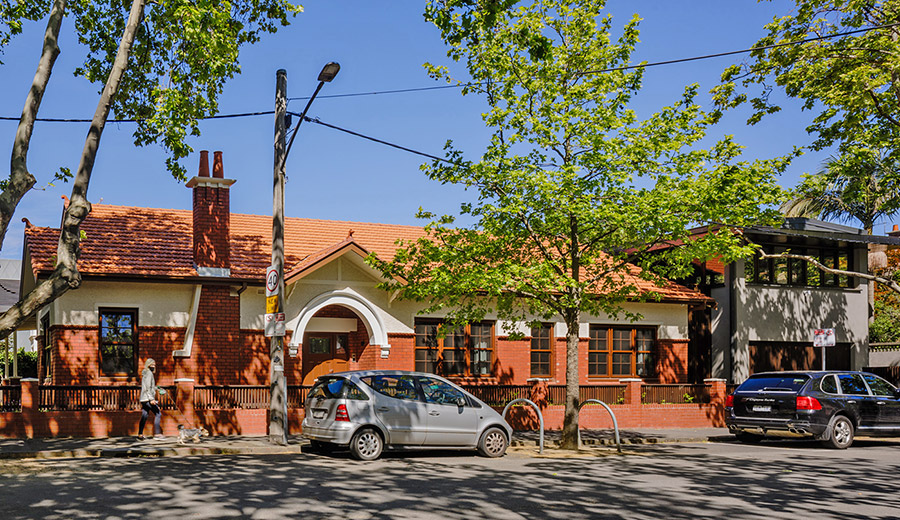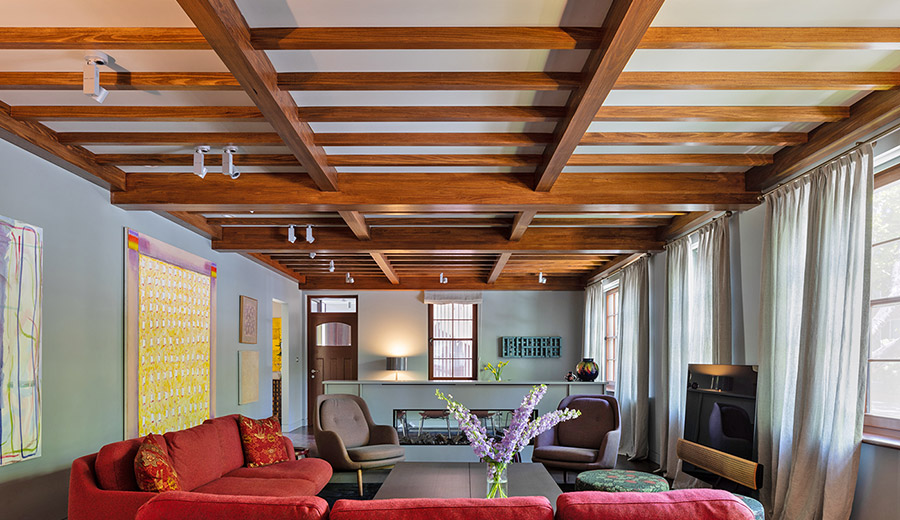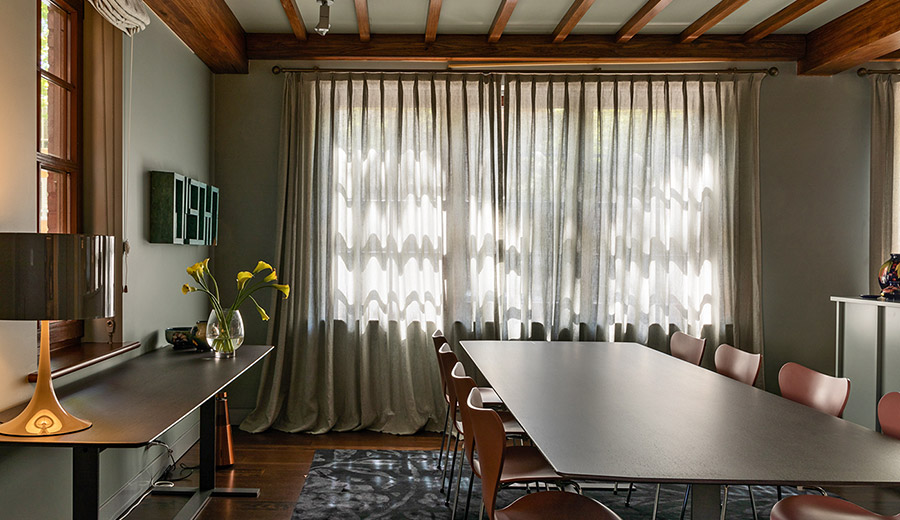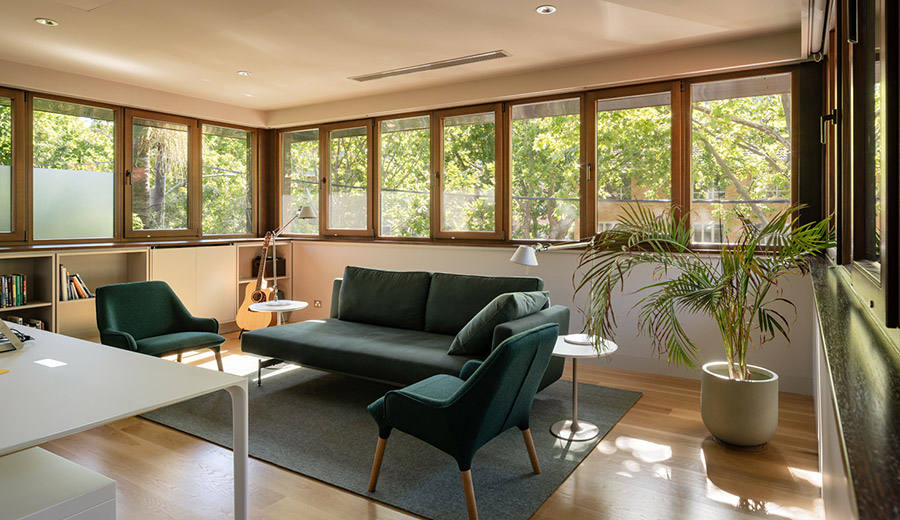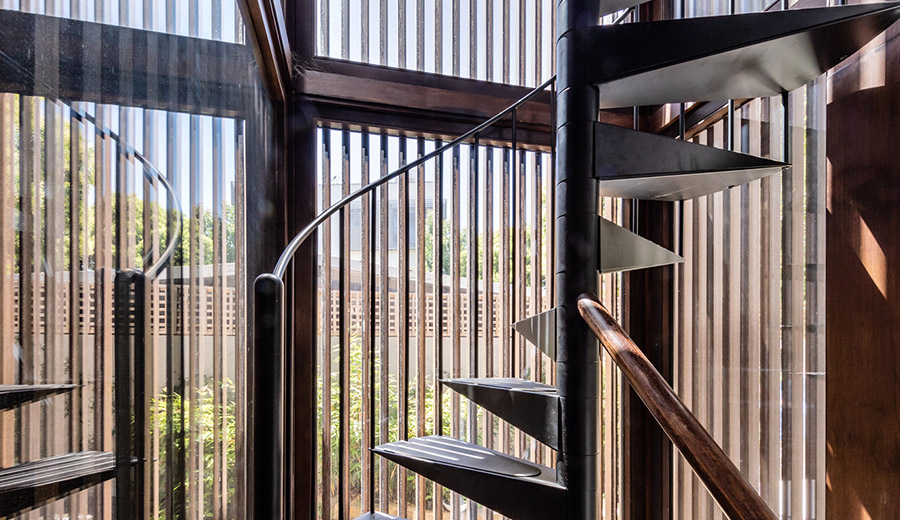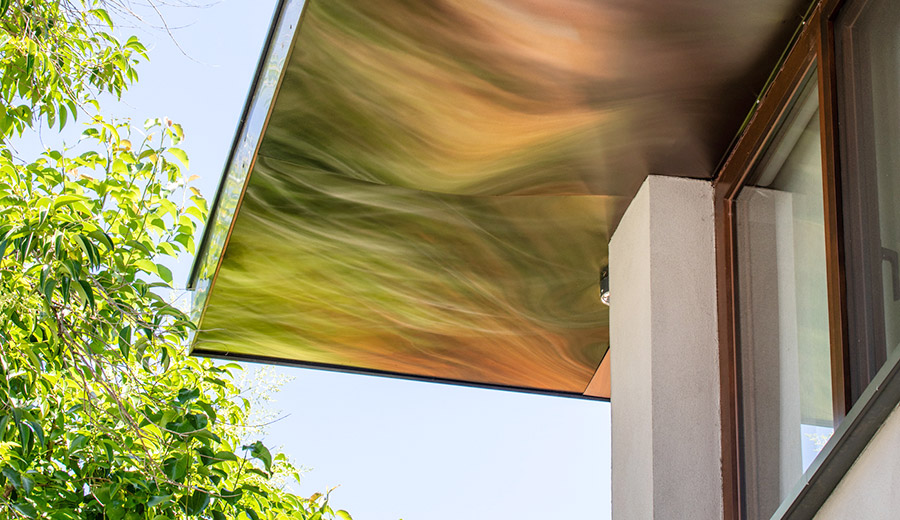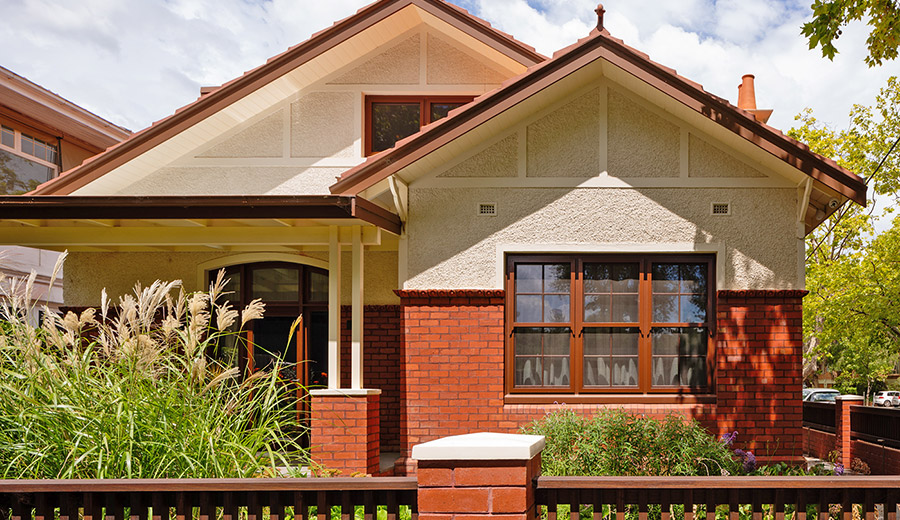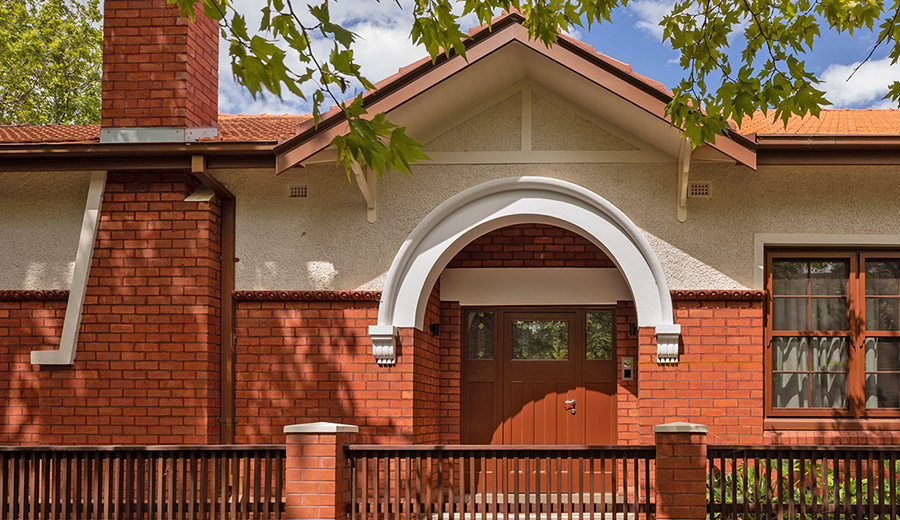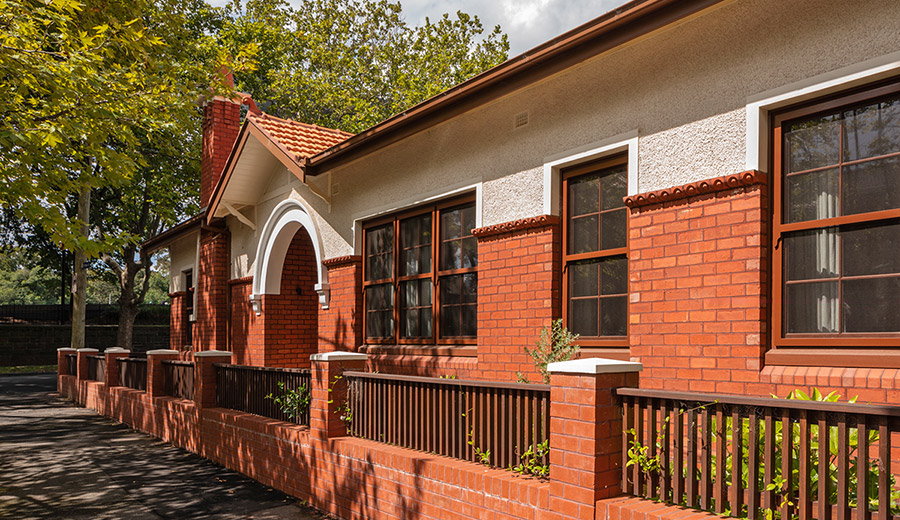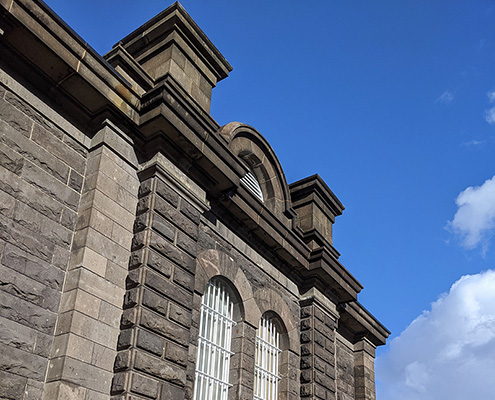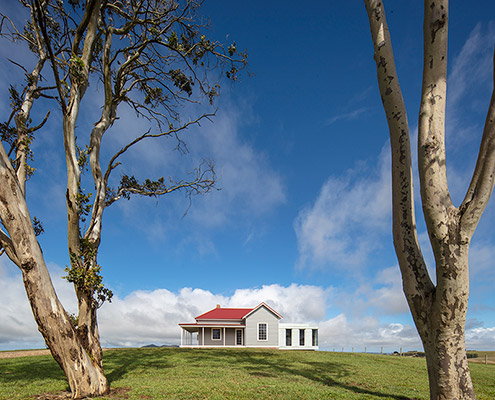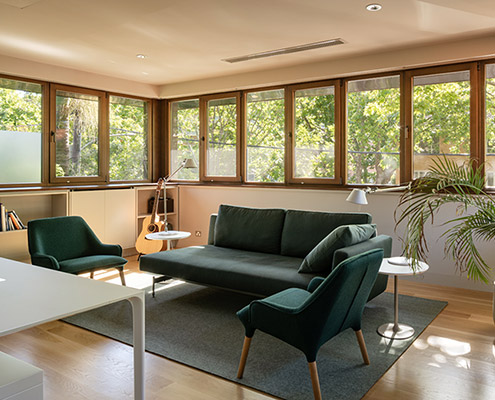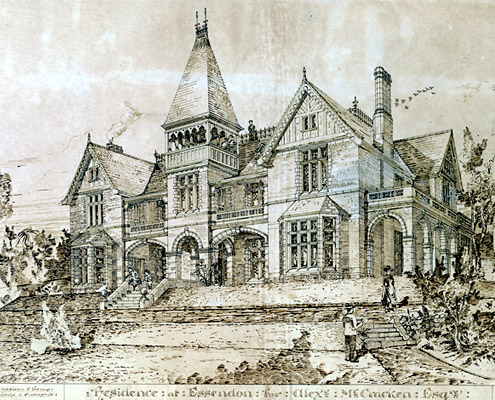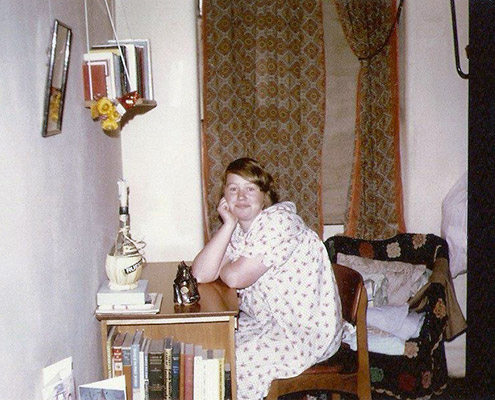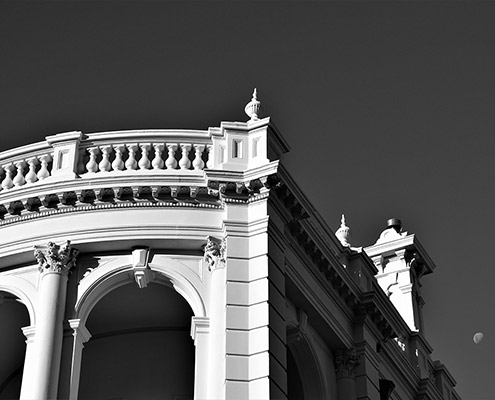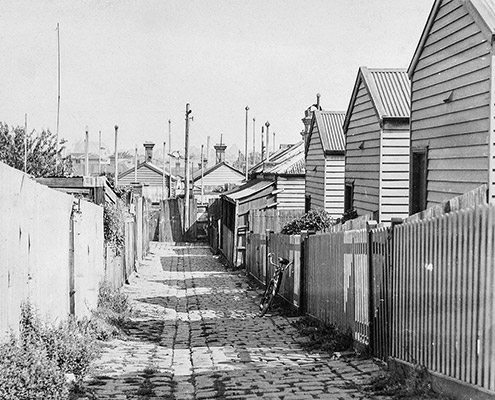
Client private owner
Jewel Box is located on the lands of the Bunurong people of the Kulin nations
This project is a great example of architectural philanthropy. An unnoticed, rundown Edwardian bungalow with a history of major alterations and a doubtful roof structure, has been returned to the local community context. It’s now the streetscape contributor that the City of Melbourne’s heritage overlay recognises it should be.
With the support of the new owners, we unlocked the house’s potential — returning the exterior to its original appearance, reinstating Arts & Crafts detailing, significantly improving the accommodation in terms of planning and energy efficiency, and expanding the available space with little impact on exterior presentation. Deceptively small on the outside, now spacious on the inside, the house unfolds as you walk through it — a Jewel Box, as our clients affectionately call their new home.
The brief for the project acknowledged the modest nature of the building and our clients’ commitment to keeping it that way. More space was needed but the form of the corner-site house was to be kept in tact. To achieve this, we replanned the ‘internal’ hidden side of the building behind the two refurbished street facades, which have been returned to their original configurations, and we added an extension above an existing brick garage to the rear of the block.
Some 450 sq m of living area has been created in a nominally single storey house with a 274 sq m footprint, without increasing the site coverage and working within the envelope of the existing main building.
Taking advantage of the need to replace the roof structure, we extended and replanned the attic area for use as a bedroom, keeping the original roof space volume. The high ceiling in the space below was lowered a little, a mezzanine level added, new dormer windows installed on the ‘inner’ side of the house, and a new timber and glass staircase designed.
The attic also contains Passive House installations, as all the works — conservation, alterations and new-build — were designed using Passive House principles. The new timber-clad extension is connected to the main building by a two-story link structure.
The refurbishment of the building’s original fabric included painstaking conservation, reinterpretation for the reinstatement of missing elements such as exterior doors, and new works designed to match original features.
Paint was stripped from the red face-brick sections of the exterior walls, a chimney has been reinstated, the built-in verandah removed and replaced with new to match the original, non-original windows have been replaced, again to match the original, the front door has been reinstated as a single door, replacement roof tiles were sourced from France, and the 1950s brick fence rebuilt. The setback of the extension aligns with the main building setback, and its roof line is slightly lower than the ridge of the main roof.
photos : Trevor Mein
photos of house pre-works: Lovell Chen

